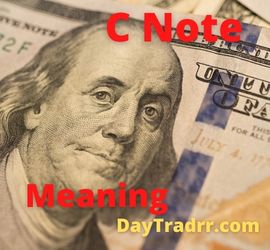Covenant-Lite (COV) Loan Definition
 A Covenant-lite COV loan is also known as a COV loan or a cov-lite loan. When compared to a typical loan. a covenant-lite COV loan provides the borrower with more freedom and reduced limitations. In fact, they are structured more like bonds. As a result, they provide the borrower with the most possible freedom with the fewest possible restrictions. Businesses and investors must have a solid understanding of the distinctions between covenant-lite loans, conventional loans, and high-yield bonds. Each of these three types of debt instrument possesses a unique set of characteristics. Each is best suited for particular circumstances and kinds of businesses. Cov-lite loans are not risk-free. The parties entering into one need to do so after thorough deliberation and preparation.
A Covenant-lite COV loan is also known as a COV loan or a cov-lite loan. When compared to a typical loan. a covenant-lite COV loan provides the borrower with more freedom and reduced limitations. In fact, they are structured more like bonds. As a result, they provide the borrower with the most possible freedom with the fewest possible restrictions. Businesses and investors must have a solid understanding of the distinctions between covenant-lite loans, conventional loans, and high-yield bonds. Each of these three types of debt instrument possesses a unique set of characteristics. Each is best suited for particular circumstances and kinds of businesses. Cov-lite loans are not risk-free. The parties entering into one need to do so after thorough deliberation and preparation.
What is a covenant?
A covenant is an agreement or pledge between two parties. When it comes to financing, covenants are often used as a means of protecting the lender’s interest. For instance, a covenant may stipulate that the borrower maintains a certain debt-to-equity ratio. Or, a specific level of financial performance at all times. Lenders are able to safeguard their assets and cut down on the amount of risk they take on when covenants are in place. A breach of a covenant may result in a default. This gives the lender the authority to demand immediate full repayment of the loan and to expedite the repayment schedule.
How Does a Covenant-Lite (COV) Loan Compare to Traditional Loans and High-Yield Bonds?
- Traditional loans vs covenant-light – When compared to regular loans, loans with fewer restrictions on the borrower’s behavior are known as covenant-lite loans. Traditional loans often contain protective covenants inside the contract for the lender’s protection. These covenants might take the form of financial maintenance measures to assess and maintain the borrower’s debt-service capacity. On the other hand, loans without covenants are more flexible in terms of the borrower’s collateral, the amount of income, and the conditions of the loan payment. However, this freedom comes at a cost. This is because covenant-lite loans represent a higher risk for the lender compared to standard loans.
- High-Yield bonds vs covenant-lite loans – Each has unique differences. High-yield bonds and covenant-lite loans both fall under the category of high-yield debt, sometimes known as “junk” debt. However, they provide investors with a larger return on their investment than investment-grade debt does. On the other hand, there are a few significant distinctions. The most significant distinction is that high-yield bonds are often issued by governments or municipalities. Conversely, covenant-lite loans are typically offered by private businesses. An additional distinction is that high-yield bonds are often more difficult to issue than covenant-lite loans. This is due to the fact that high-yield bonds are required to have a rating from a rating agency. However, covenant-lite loans do not have this requirement. In addition, the default and recovery rates for high-yield bonds have a tendency to be greater when compared to those for covenant-lite loans.
Covenant-Lite (COV) Loan – Key Points
Covenant-lite COV loans offer more flexibility and fewer restrictions for the borrower compared to traditional loans. However, they carry more risk for the lender. They are similar to high-yield bonds in terms of yield. But, they have distinct characteristics such as ease of issuance and default rates.
There are considerations when choosing between a regular loan, a high-yield bond, and a covenant-lite loan. Businesses and investors should take into account their unique requirements as well as the state of the financial markets. It is also very important to bear in mind that the regulatory atmosphere for covenant-lite loans is always changing. Companies need to be aware of any potential future regulatory changes. Obviously, regulatory changes can have a significant impact on the financing alternatives available.
COV loans offer fewer restrictions to the borrower. This extra flexibility to the borrower comes at the expense of the lender. Usually, the lender will have fewer guarantees to protect their investment. For an investor, high-yield bonds provide returns that are comparable to those of cov-lite loans. This is despite the fact that they are often more difficult to issue and have higher default rates. As a borrower or lender, it’s important to weigh the pros and cons of each type of financing. As an investor, consider the market scenario and the type of company or sector that can benefit from each type of financing. In addition, compare the interest rates and the risk associated with each type of financing.
Covenant-Lite (COV) Loan – The Impact on Investors and Shareholder Returns
In recent years, covenant-lite loans have gained popularity, particularly among private equity companies and high-net-worth people. This trend is expected to continue. Although the borrower has more leeway to make decisions and is subject to fewer constraints with these loans, the lender is exposed to a greater degree of risk. As a result, shareholders and investors should understand the possible effect that covenant-lite loans might have on profitability. For example, an increase in risk is one of the possible effects that covenant-lite loans might have on investors.
However, covenant-lite loans can also have a benaficial effect. Firms that use these loans productively are able to effectively develop and create returns for shareholders. In that instance, the impact of covenant-lite loans on investor returns may have a beneficial impact and have a favorable influence overall. Firms are able to utilize the cash for growth-oriented activities such as expansion and acquisitions. Moreover, they have greater freedom with covenant-lite loans. This may lead to improved returns for shareholders if the companies utilise the funds effectively.
Higher interest payments for the borrower
A covenant-lite (COV) loan provides the lender with a lower level of protection. Therefore, there is a larger possibility of the loan going into default and a greater potential for financial loss. To compensate, these loans usually offer greater returns a direct result of the increased risk involved. Therefore, potential investors in covenant-lite loans must to be ready for a greater degree of risk. Thorough due diligence is a must prior to making any investments in this kind of loan or debt instrument.
Debt Service may lose priority
Another possible consequence of covenant-lite loans on investors is the possibility for diminished returns. Firms that take on covenant-lite loans have greater flexibility in terms of collateral, income level, and loan payment conditions. As a result, they may prioritize paying out dividends to investors above paying down the debt. This may result in diminished profits for investors, particularly in the case of a default.
Financial downturns
Covenant-lite loans have an impact on both the firms and their capacity to create cash. In the case of a downturn, it is possible that the firm may not have sufficient cash to make the planned loan payments. As a result, the company may be forced to either incur further debt or sell assets in order to pay off the loan. Because of this, shareholders may see a decrease in their returns.
Covenant-lite COV Loan – Final Words
The influence of covenant-lite loans on investor returns may either be beneficial or negative. Clearly, it depends on the particular circumstances and the general state of the company’s finances as a whole. Before participating in these loans, shareholders and investors should give serious consideration to the possible dangers as well as the rewards that are linked with them. In order to make a choice that is well-informed and appropriate, it is essential to do enough research and due diligence on the firm, its management, and the broader market condition.
Frequently Asked Questions (FAQ)
What is a covenant-lite COV loan?
A covenant-lite loan is also known as a COV loan or cov-lite loan. It is afforded a greater degree of leeway and is subject to fewer constraints. This form of loan is classified as a term loan and is structured more like a bond. This type of loan provides the borrower the most possible freedom with the fewest possible restrictions.
How is a covenant-lite loan different from a traditional loan?
Traditional loans often contain protective covenants inside the contract for the lender’s protection. These covenants might take the form of financial maintenance measures to assess and maintain the borrower’s debt-service capacity. On the other hand, loans without covenants are more flexible in terms of the borrower’s collateral, the amount of income, and the conditions of the loan payment. However, this freedom comes at a cost. As a result, covenant-lite loans represent a higher risk for the lender compared to standard loans.
How is a covenant-lite loan different from a high-yield bond?
High-yield bonds and covenant-lite loans both fall under the category of high-yield debt. This category is sometimes known as “junk” debt. However, they provide investors with a larger return on their investment than investment-grade debt does. On the other hand, there are a few significant distinctions. For example, high-yield bonds are issued by governments or municipalities, while covenant-lite loans are offered by private businesses. One other distinction is that high-yield bonds are often more difficult to issue than covenant-lite loans. This is due to the fact that high-yield bonds are required to have a rating from a rating agency. But, covenant-lite loans do not have this need.
Who can qualify for a covenant-lite (COV) loan?
In most cases, the only types of borrowers that are eligible for a covenant-lite loan are investment companies, businesses, and high-net-worth individuals.
What are the benefits of a covenant-lite (COV) loan for borrowers?
For debtors, the primary advantages of covenant-lite loans consist of more flexibility. For example, the terms of the loan’s collateral requirements, income requirements, and payment terms. Borrowers may find it simpler this way to have access to the capital they need for growth-oriented activities. Reduced covenants provide greater flexibility for expanding their operations or making acquisitions.
What are the risks of covenant-lite loans for investors?
The possibility for higher risk of default and decreased profits are the two primary dangers that investors face when dealing with covenant-lite loans. Covenant-lite loans provide the lender with a lower level of protection. Therefore, there is a larger possibility of the loan going into default and a greater potential for financial loss. In addition, given the increased leeway that these loans provide to businesses, it’s possible that they’ll prioritize the payment of dividends to investors above the payment of the principal on the loan. Ultimately, this may result in lower returns for investors.
Are covenant-lite loans regulated?
There are now a number of government entities, including the SEC, that are in charge of regulating covenant-lite loans. Nevertheless, the laws that surround these loans can change and are often being updated. As a result, it is essential for businesses and investors to maintain a level of awareness about any potential changes in rules that may have an effect on the funding choices available to them.
Where can I learn more about covenant-lite (COV) loans?
There are various resources available to learn more about covenant-lite loans. For example, there are financial websites, business journals, and financial consultants. As an investor, it’s always important to consult with a financial advisor for personalized advice.
Up Next: Stash Stock Party – Get in on the Action!
 Are you thinking about using a personal finance and investment app to help you keep track of your money and make it grow? Stash is a popular option to consider. However, before making a choice, it’s important to know how much the platform costs. Also, what fees it has, as well as any risks and downsides. Investing can be fun and exciting at a Stash Stock party. But before diving in head first, it’s important to do your homework and weigh the advantages against the disadvantages.
Are you thinking about using a personal finance and investment app to help you keep track of your money and make it grow? Stash is a popular option to consider. However, before making a choice, it’s important to know how much the platform costs. Also, what fees it has, as well as any risks and downsides. Investing can be fun and exciting at a Stash Stock party. But before diving in head first, it’s important to do your homework and weigh the advantages against the disadvantages.
Stash is a personal finance and investing app. It lets people invest in stocks, exchange-traded funds (ETFs), and other types of investments. Using the app requires nothing more than a smartphone or other mobile device. The app makes it easy for people who have never invested before to start. Moreover, the platform has a variety of educational tools and learning resources. These references help users learn about the financial markets and make smart investment choices. Users can start a portfolio with a small amount of money and add to it over time. Depending on their goals and risk tolerance, new investors can choose from a variety of investment options.




